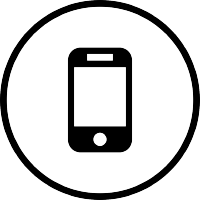Cordova iOS plugin exposing the ̶f̶u̶l̶l̶ WebRTC W3C JavaScript APIs.
- Public Google Group (mailing list) for questions and discussions about cordova-plugin-iosrtc.
- Bug Tracker for reporting issues and requesting new features (please don't use the bug tracker for questions or problems, use the mailing list instead).
- NPM package.
Yet another WebRTC SDK for iOS?
Absolutely not. This plugin exposes the WebRTC W3C API for Cordova iOS apps (you know there is no WebRTC in iOS, right?), which means no need to learn "yet another WebRTC API" and no need to use a specific service/product/provider.
Who?
This plugin was initially developed at eFace2Face, and later maintained by the community, specially by Saúl Ibarra Corretgé (The OpenSource Warrior Who Does Not Burn).
In order to make this Cordova plugin run into a iOS application some requirements must be satisfied in both development computer and target devices:
- Xcode >= 10.3 (10G8)
- iOS >= 10.2 (run on lower versions at your own risk, don't report issues)
swift-version=> 4.2cordova>= 7.1.0cordova-ios>= 4.5.5
- WebRTC W3C v1.0.0
- WebRTC.framework => M69
- Janus => 0.7.4
- JSSip => 3.1.2
- Sip.js => 0.15.6
- OpenEasyrtc => 2.0.0
- openvidu => 2.11.0
- Ionic => v8
Within your Cordova project:
$ cordova plugin add cordova-plugin-iosrtc(or add it into a <plugin> entry in the config.xml of your app).
- Remove the iOS platform and add it again (this apply "hook" file):
$ cordova platform remove ios
$ cordova platform add ios- Last Tested WebRTC.framework version: M69 on cordova-plugin-iosrtc version 6.0.0
- Building: Guidelines for building a Cordova iOS application including the cordova-plugin-iosrtc plugin.
- Building
libwebrtc: Guidelines for building Google's libwebrtc with modifications needed by the cordova-plugin-iosrtc plugin (just in case you want to use a different version of libwebrtc or apply your own changes to it).
The plugin exposes the cordova.plugins.iosrtc JavaScript namespace which contains all the WebRTC classes and functions.
/* global RTCPeerConnection */
// Note: This allow this sample to run on any Browser
var cordova = window.cordova;
if (cordova && cordova.plugins && cordova.plugins.iosrtc) {
// Expose WebRTC and GetUserMedia SHIM as Globals (Optional)
// Alternatively WebRTC API will be inside cordova.plugins.iosrtc namespace
cordova.plugins.iosrtc.registerGlobals();
// Enable iosrtc debug (Optional)
cordova.plugins.iosrtc.debug.enable('*', true);
}
//
// Container for this sample
//
var appContainer = document.body;
//
// Sample getUserMedia
//
//
var localStream, localVideoEl;
function TestGetUserMedia() {
localVideoEl = document.createElement('video');
localVideoEl.setAttribute('autoplay', 'autoplay');
localVideoEl.setAttribute('playsinline', 'playsinline');
appContainer.appendChild(localVideoEl);
return navigator.mediaDevices.getUserMedia({
video: true,
audio: true
// Note: Use navigator.mediaDevices.enumerateDevices() Promise to get deviceIds
/*
video: {
// Test Back Camera
//deviceId: 'com.apple.avfoundation.avcapturedevice.built-in_video:0'
//sourceId: 'com.apple.avfoundation.avcapturedevice.built-in_video:0'
deviceId: {
exact: 'com.apple.avfoundation.avcapturedevice.built-in_video:0'
}
// Test FrameRate
frameRate:{ min: 15.0, max: 30.0 } // Note: Back camera may only support max 30 fps
},
audio: {
deviceId: {
exact: 'Built-In Microphone'
}
}*/
}).then(function (stream) {
console.log('getUserMedia.stream', stream);
console.log('getUserMedia.stream.getTracks', stream.getTracks());
// Note: Expose for debug
localStream = stream;
// Attach local stream to video element
localVideoEl.srcObject = localStream;
return localStream;
}).catch(function (err) {
console.log('getUserMedia.error', err, err.stack);
});
}
//
// Sample RTCPeerConnection
//
var pc1 = new RTCPeerConnection(),
pc2 = new RTCPeerConnection();
var peerVideoEl, peerStream;
function TestRTCPeerConnection(localStream) {
// Note: Deprecated but supported
//pc1.addStream(localStream);
// Add local stream tracks to RTCPeerConnection
localStream.getTracks().forEach(function (track) {
console.log('addTrack', track);
pc1.addTrack(track);
});
// Basic RTCPeerConnection Local WebRTC Signaling follow.
function onAddIceCandidate(pc, can) {
console.log('addIceCandidate', pc, can);
return can && pc.addIceCandidate(can).catch(function (err) {
console.log('addIceCandidateError', err);
});
}
pc1.addEventListener('icecandidate', function (e) {
onAddIceCandidate(pc2, e.candidate);
});
pc2.addEventListener('icecandidate', function (e) {
onAddIceCandidate(pc1, e.candidate);
});
pc2.addEventListener('addstream', function (e) {
console.log('pc2.addStream', e);
peerVideoEl = document.createElement('video');
peerVideoEl.setAttribute('autoplay', 'autoplay');
peerVideoEl.setAttribute('playsinline', 'playsinline');
appContainer.appendChild(peerVideoEl);
// Note: Expose for debug
peerStream = e.stream;
// Attach peer stream to video element
peerVideoEl.srcObject = peerStream;
});
pc1.addEventListener('iceconnectionstatechange', function (e) {
console.log('pc1.iceConnectionState', e, pc1.iceConnectionState);
if (pc1.iceConnectionState === 'completed') {
console.log('pc1.getSenders', pc1.getSenders());
console.log('pc2.getReceivers', pc2.getReceivers());
}
});
pc1.addEventListener('icegatheringstatechange', function (e) {
console.log('pc1.iceGatheringStateChange', e);
});
pc1.addEventListener('negotiationneeded', function (e) {
console.log('pc1.negotiatioNeeded', e);
return pc1.createOffer().then(function (d) {
var desc = {
type: d.type,
sdp: d.sdp
};
console.log('pc1.setLocalDescription', desc);
return pc1.setLocalDescription(desc);
}).then(function () {
var desc = {
type: pc1.localDescription.type,
sdp: pc1.localDescription.sdp
};
console.log('pc2.setLocalDescription', desc);
return pc2.setRemoteDescription(desc);
}).then(function () {
console.log('pc2.createAnswer');
return pc2.createAnswer();
}).then(function (d) {
var desc = {
type: d.type,
sdp: d.sdp
};
console.log('pc2.setLocalDescription', desc);
return pc2.setLocalDescription(d);
}).then(function () {
var desc = {
type: pc2.localDescription.type,
sdp: pc2.localDescription.sdp
};
console.log('pc1.setRemoteDescription', desc);
return pc1.setRemoteDescription(desc);
}).catch(function (err) {
console.log('pc1.createOffer.error', err);
});
});
}
// Run sample
TestGetUserMedia().then(function (localStream) {
TestRTCPeerConnection(localStream);
});
// See ./extra/renderer-and-libwebrtc-tests.js for more samples usage.In case you'd like to expose the API in the global namespace like regular browsers you can do the following:
// Just for Cordova apps.
document.addEventListener('deviceready', function () {
// Just for iOS devices.
if (window.device.platform === 'iOS') {
cordova.plugins.iosrtc.registerGlobals();
// load adapter.js
var adapterVersion = 'latest';
var script = document.createElement("script");
script.type = "text/javascript";
script.src = "https://webrtc.github.io/adapter/adapter-" + adapterVersion + ".js";
script.async = false;
document.getElementsByTagName("head")[0].appendChild(script);
}
});And that's all. Now you have window.RTCPeerConnection, navigator.getUserMedia, etc.
See the FAQ.
Read the full documentation in the docs folder.
People and companies using cordova-plugin-iosrtc.
If you are using the plugin we would love to hear back from you!
Don't call plugin methods within WebSocket events (onopen, onmessage, etc). There is an issue in iOS Safari (see issue #12). Instead run a setTimeout() within the WebSocket event if you need to call plugin methods on it.
Or better yet, include the provided ios-websocket-hack.js in your app and load into your index.html as follows:
<script src="cordova.js"></script>
<script src="ios-websocket-hack.min.js"></script>
There is no real media source attached to the <video> element so some HTML5 video events and properties are artificially emitted/set by the plugin on behalf of the video element.
Methods such as play(), pause() are not implemented. In order to pause a video just set enabled = false on the associated MediaStreamTrack.
See CHANGELOG.md.
- Harold Thetiot
- Iñaki Baz Castillo (no longer active maintainer)
- Saúl Ibarra Corretgé (no longer active maintainer)
Looking for new maintainers. Interested? Comment here.
MIT :)

